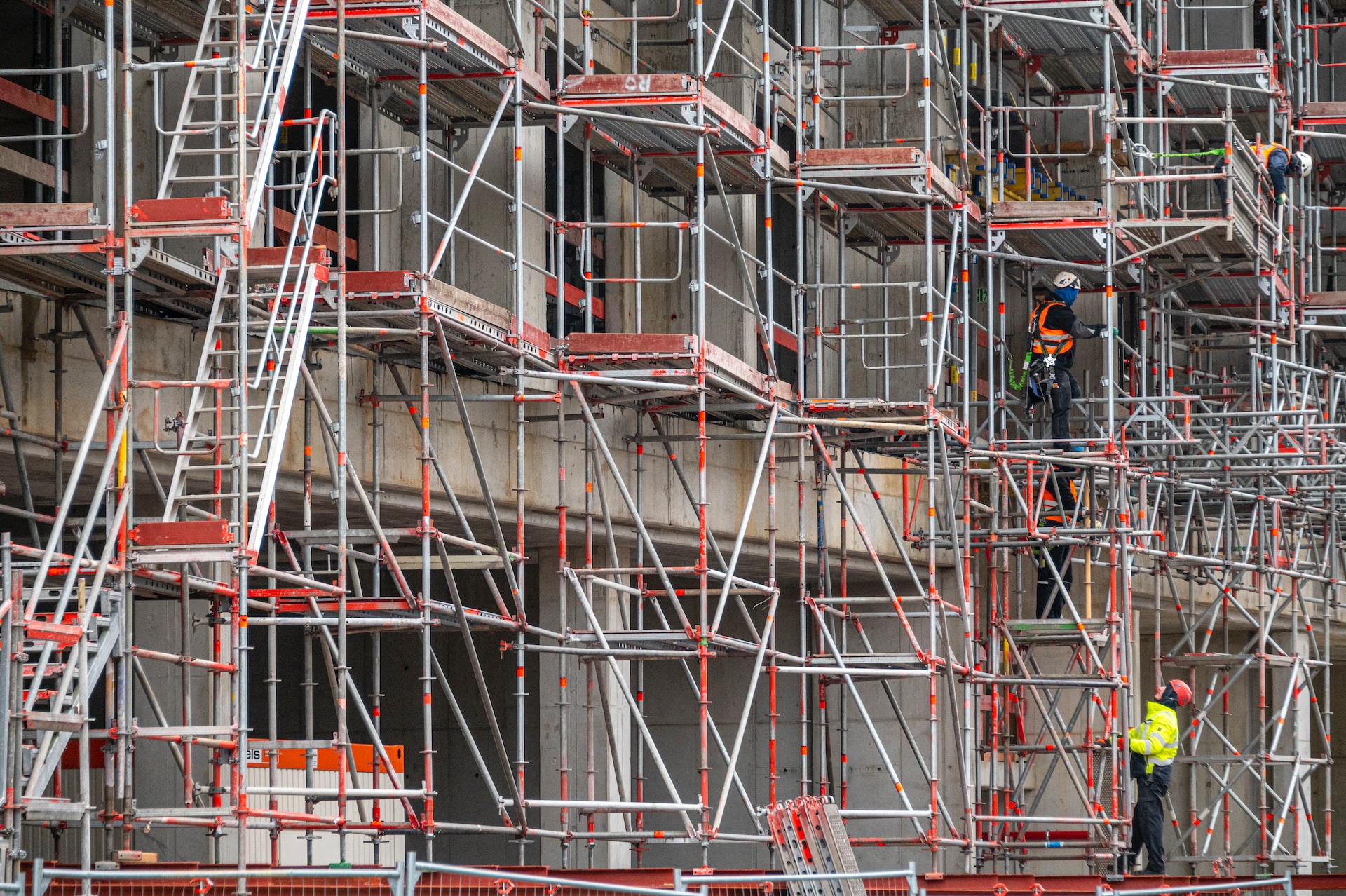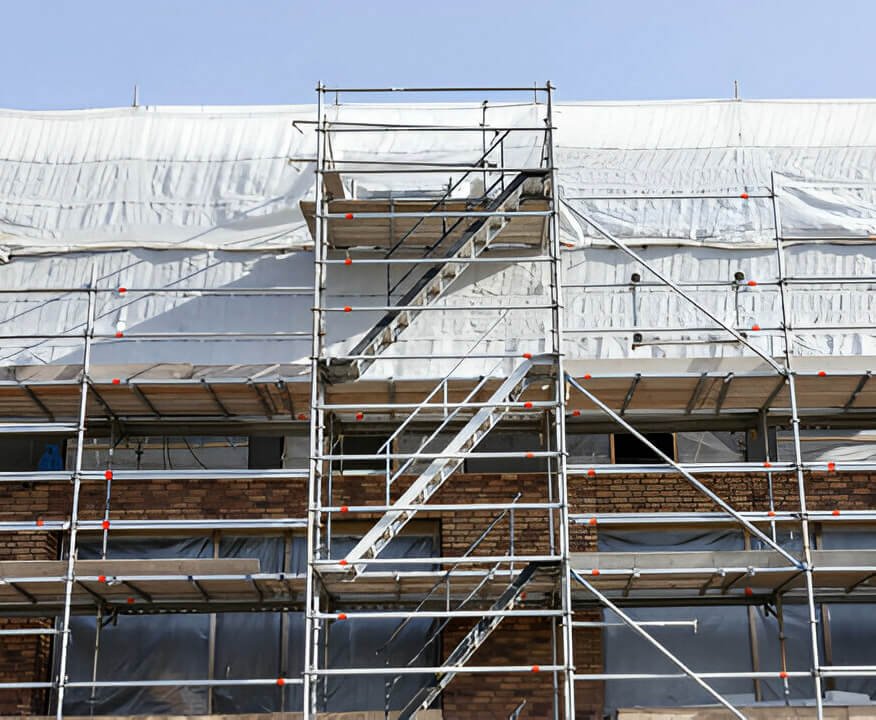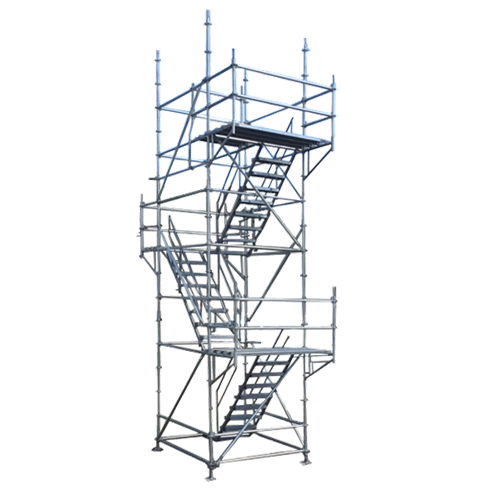Exploring the Numerous Kinds Of Scaffolding Utilized in Building And Construction Jobs
The building industry relies greatly on different sorts of scaffolding to meet certain task demands, each offering distinctive benefits and applications. Traditional frame scaffolding provides a sturdy structure for general tasks, while suspended scaffolding is vital for work on high-rise structures. Various other alternatives, such as system and rolling scaffolding, provide to effectiveness and wheelchair, specifically. The cantilever alternative verifies invaluable in urban environments where area is constricted. Understanding the subtleties of these scaffolding kinds is vital for optimizing security and performance on construction websites, motivating a more detailed evaluation of their special features and applications.

Standard Frame Scaffolding
Conventional frame scaffolding is just one of one of the most commonly utilized methods in the construction industry as a result of its toughness and adaptability. This system includes horizontal and upright frames that are put together to create a secure platform for workers and materials. The main elements consist of vertical messages, horizontal journals, and angled dental braces, which with each other offer a strong structure that can support significant tons.
Among the crucial advantages of traditional frame scaffolding is its flexibility to various construction jobs, ranging from household structures to huge industrial frameworks. The modular style enables simple setting up and disassembly, making it efficient for both long-term and temporary projects. In addition, the system can be personalized in elevation and size, suiting various structure designs and website problems.
Safety and security is paramount in scaffolding applications, and traditional framework systems are geared up with guardrails and toe boards to stop falls and make sure worker protection. Moreover, normal assessments and adherence to safety policies are important in preserving the honesty of the scaffold. On the whole, typical structure scaffolding stays an essential option in the construction sector, offering a reliable system for labor and enhancing general job performance

Suspended Scaffolding
Suspended scaffolding provides a distinct option for construction jobs that require accessibility to raised surfaces, especially in scenarios where traditional frame scaffolding may be impractical. This sort of scaffolding is typically suspended from the roof or upper degrees of a framework, making use of a system of systems, ropes, and wheels to develop a working space that can be readjusted to different elevations.
Among the primary advantages of put on hold scaffolding is its versatility. It can be quickly rearranged or decreased to accommodate adjustments in building and construction needs, making it ideal for jobs such as window installation, frontage job, and maintenance on skyscrapers. Furthermore, the very little footprint of suspended scaffolding permits better use ground space in city settings, where space is frequently minimal.
Security is an important consideration in the use of put on hold scaffolding. Correct rigging and anchoring systems have to be used to make certain stability and stop crashes. Operators must additionally be trained in the secure usage of this equipment. Generally, put on hold scaffolding provides a reliable and effective solution for accessing hard-to-reach areas in various building and construction scenarios, improving both productivity and safety on site.
System Scaffolding
System scaffolding, typically considered as a modern-day service in the scaffolding sector, contains pre-engineered components that can be rapidly put together and adapted for numerous building projects. Scaffolding. This kind of scaffolding is characterized by its modular layout, which allows for versatility and efficiency on work sites, accommodating various heights and architectural needs
Generally made from high-strength steel or light weight aluminum, system scaffolding provides boosted resilience and security. The parts consist of vertical articles, straight journals, and diagonal braces, which interconnect safely, guaranteeing a durable structure. The style usually integrates standard fittings, streamlining setting up and disassembly procedures, thereby reducing labor time and expenses.

Rolling Scaffolding
Rolling scaffolding is a versatile choice to traditional set scaffolding, designed for mobility and convenience of use on building and construction sites. This type of scaffolding is composed of a system sustained by frames with wheels, allowing workers to quickly move it as needed. The movement function substantially improves productivity, as it decreases downtime associated with assembling and dismantling taken care of scaffolding.
Generally created from lightweight products such as aluminum or steel, rolling scaffolding provides a strong yet portable service for jobs needing frequent repositioning - Scaffolding. It is specifically useful in jobs such as paint, drywall installation, and electric work, where access to various elevations and locations is necessary
Security is paramount in rolling scaffolding layout, with functions such as securing wheels to go to this site avoid unexpected motion when in usage, and guardrails to protect employees from falls. Furthermore, several versions are adjustable in weblink height, suiting numerous project demands.
Cantilever Scaffolding

The layout of cantilever scaffolding normally includes utilizing arms or brackets secured to a building or framework, making it possible for the platform to prolong outside safely. Safety and security is critical; thus, these scaffolds must be engineered to stand up to various lots and environmental conditions. Regular inspection and upkeep are important to make certain structural integrity and employee safety.
Cantilever scaffolding is preferred for its convenience and effective use of room, making it a preferred option in city environments where space constraints are typical. Additionally, it promotes much easier access to high altitudes, eventually adding to the total performance of building and construction projects. Similar to all scaffolding kinds, correct training and adherence to safety criteria are essential for employees making use of cantilever scaffolding.
Verdict
To conclude, the varied kinds of scaffolding utilized in construction projects each offer unique purposes tailored to specific website demands. Typical framework scaffolding gives stability, while suspended scaffolding offers adaptability for elevated tasks. System scaffolding promotes fast setting up, and rolling scaffolding boosts flexibility for differing job atmospheres. Cantilever scaffolding effectively resolves challenges in metropolitan settings. Comprehending these scaffolding types is necessary for content maximizing security and efficiency in construction, eventually adding to the successful conclusion of jobs.
Standard framework scaffolding offers a durable structure for general tasks, while suspended scaffolding is crucial for job on high-rise structures.Moving scaffolding is a functional alternative to standard set scaffolding, developed for flexibility and ease of use on construction websites. As with all scaffolding kinds, appropriate training and adherence to safety and security standards are crucial for workers utilizing cantilever scaffolding.
Standard frame scaffolding provides security, while suspended scaffolding offers adaptability for raised tasks. System scaffolding helps with fast assembly, and rolling scaffolding improves mobility for varying job atmospheres.